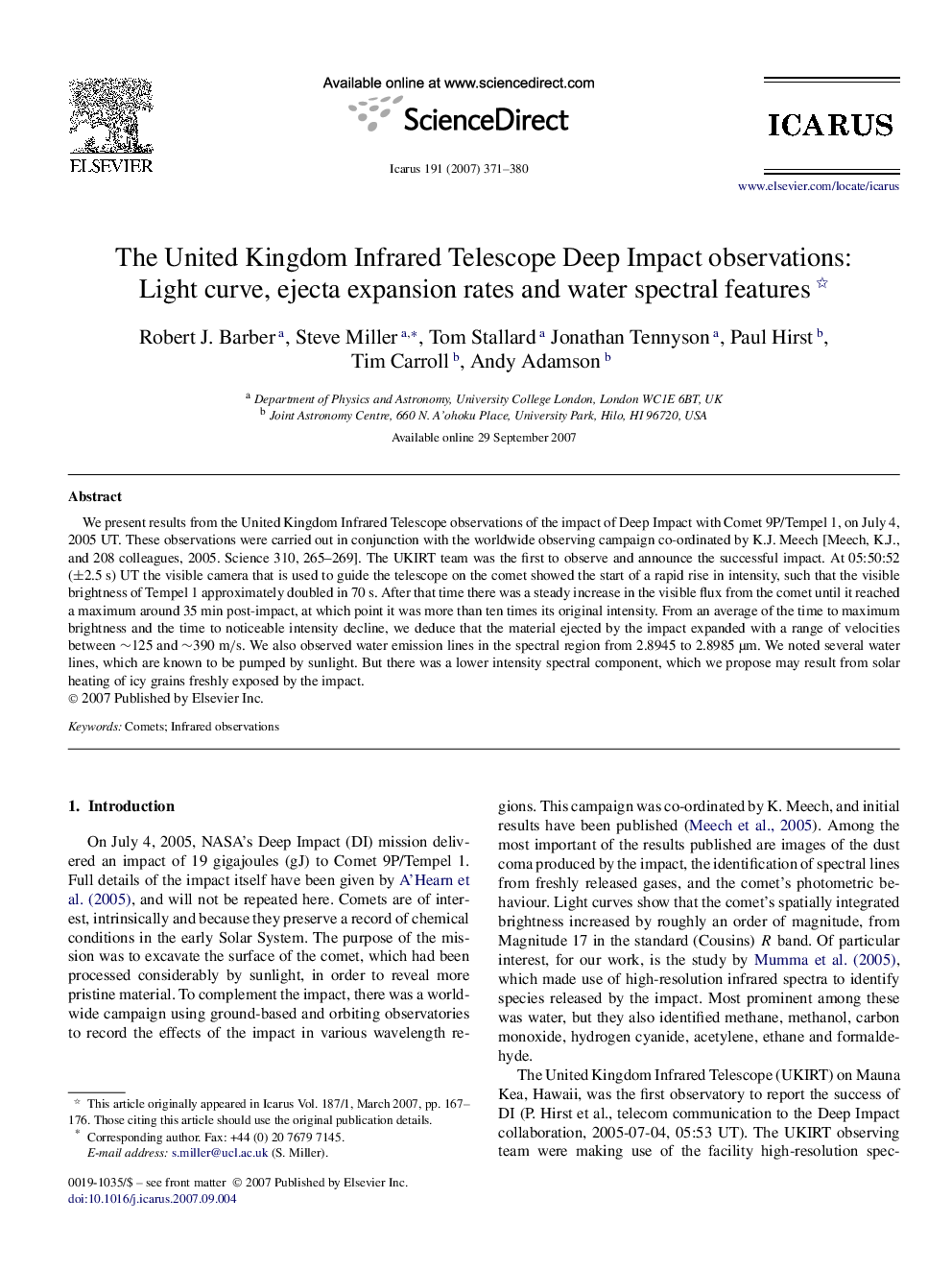| Article ID | Journal | Published Year | Pages | File Type |
|---|---|---|---|---|
| 1775260 | Icarus | 2007 | 10 Pages |
Abstract
We present results from the United Kingdom Infrared Telescope observations of the impact of Deep Impact with Comet 9P/Tempel 1, on July 4, 2005 UT. These observations were carried out in conjunction with the worldwide observing campaign co-ordinated by K.J. Meech [Meech, K.J., and 208 colleagues, 2005. Science 310, 265-269]. The UKIRT team was the first to observe and announce the successful impact. At 05:50:52 (±2.5 s) UT the visible camera that is used to guide the telescope on the comet showed the start of a rapid rise in intensity, such that the visible brightness of Tempel 1 approximately doubled in 70 s. After that time there was a steady increase in the visible flux from the comet until it reached a maximum around 35 min post-impact, at which point it was more than ten times its original intensity. From an average of the time to maximum brightness and the time to noticeable intensity decline, we deduce that the material ejected by the impact expanded with a range of velocities between â¼125 and â¼390 m/s. We also observed water emission lines in the spectral region from 2.8945 to 2.8985 μm. We noted several water lines, which are known to be pumped by sunlight. But there was a lower intensity spectral component, which we propose may result from solar heating of icy grains freshly exposed by the impact.
Keywords
Related Topics
Physical Sciences and Engineering
Earth and Planetary Sciences
Space and Planetary Science
Authors
Robert J. Barber, Steve Miller, Tom Stallard, Jonathan Tennyson, Paul Hirst, Tim Carroll, Andy Adamson,
